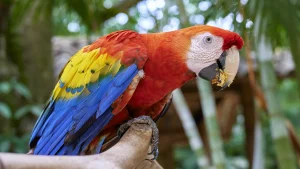The Tolupan ethnic group in Honduras
They are an indigenous group long before the Mayan civilization that knew, in the midst of the cultural transformations of the environment, to maintain a certain identity until recent times.
Its authentic name is Tolupán; the term xicaque was used by the colonizers to refer to the “uncivilized” indigenous people, who have not been Christianized, and to different rebel groups in Taguzgalpa.
They are also known as xicaques, jicaques or torrupanes. Historically the word jicaque, are its different forms of writing,
According to the chroniclers of the late seventeenth century, it was heard that the indigenous people of Honduras were commonly called “Xicaques”. However, in their list 29, aboriginal groups of the province, the term “taupanes” is also included, which seems similar to “torrupan”, which is accepted today.
The Tolupanes live in the municipalities of Yorito, El Negrito, Morazán, Victoria and Olanchito; in the department of Yoro and in the municipalities of Orica and Marale, in the department of Francisco Morazán.
See Ethnicities of Honduras
Historical Features
During pre-Hispanic times, they constituted a hunter-gatherer group that was dispersed over a wide region and whose retreat towards more abrupt areas is due to the capture and exploitation of which they were subjected by the conquerors.
Their vital activities were hunting, gathering and fishing.
The Tolupanes resembled the Sumos, the Payas, and the Misquitos, although they differed from them linguistically.
The persecution that the conquerors unleashed against them during the colonization, forced them to take refuge in the jungles and mountains of the north-central region of the country, staying dispersed and away from society, which made them become almost nomads and did not manage to develop. an architecture of its own.
Current Population
The Tolupán population is currently approximately 20 thousand individuals. They are made up of 28 tribes distributed in six municipalities in the department of Yoro, plus two tribes who emigrated in the last century to the mountain of La Flor, municipality of Orica, Francisco Morazán.
It is said that the Tolupán group that went to the Montaña de La Flor, in the middle of the last century, was made up of three married couples, in addition to a young single man. Shortly after reaching the mountain they changed their names to mislead their pursuers; Two families were buquí, which crosses the region, and adopted the surname Martínez; the other family settled on the rest of the river and took the surname Soto.
Currently the eastern population, called San Juan, is governed by the chief Cipriano Martínez, who maintains an open attitude with the outside world.
The western sector is located in the highest part of the mountain; Wherever the Tolupans live in more primitive conditions, a good number of them wear the sloop as clothing, they still hunt with instruments of yesteryear, walk barefoot, understand little Spanish and totally reject contact with strangers.
Traditions and Customs
According to anthropologist Anne Chapman, they live in semi-permanent settlements, in multi-family houses, practice rudimentary agriculture, hunting (with bow) and fishing. They practice basketry, little pottery and gourds.
At present the clothing has been ladinized. They have an egalitarian society governed by caciques (now governed by an assembly of elders and shamans).
In the more traditional Tolupan groups of Montaña de La Flor, four characteristic elements can be divided: kinship terms, divinatory techniques, dual organization, myths and legends.
The indigenous people of Yoro conserve few traditional elements, such as a certain survival of the language, the elaboration of some handicraft objects (especially baskets, to a lesser extent matates, in some cases pipes, brooms and pans that probably have indigenous origin).
The Tolupanes of the Montaña de La Flor, have the custom of watching over their dead in the kitchen. During the 24-hour wake time, they eat their daily food and drink coffee. They do not use boxes, but the corpse is wrapped in the sheets that it used to sleep and is buried with its few belongings. During the vigil, no one makes any comment, they do not mourn their dead, but rather reflect on what the deceased was in life.
Living Place
They live in huts, mostly made of bahareque, a roof made of manaca (a kind of leaf obtained from a palm) and a dirt floor.
The houses are not close to each other; they are not delimited by fences either.
A family lives in each house and, in the most remote communities, the Tolupans do not use beds to sleep, but instead do so on planks on the floor or in a tapesco. Some time ago the bed began to be used.
Tongue
The language spoken by the Tolupanes during the 18th century was Hokan Fiux. Now it is known as «Tolteca» or simply «Tol.»
What’s more
- Get to know the Ethnicities and Indigenous Groups of Honduras
- Map of Ethnicities and Indigenous Groups in Honduras



